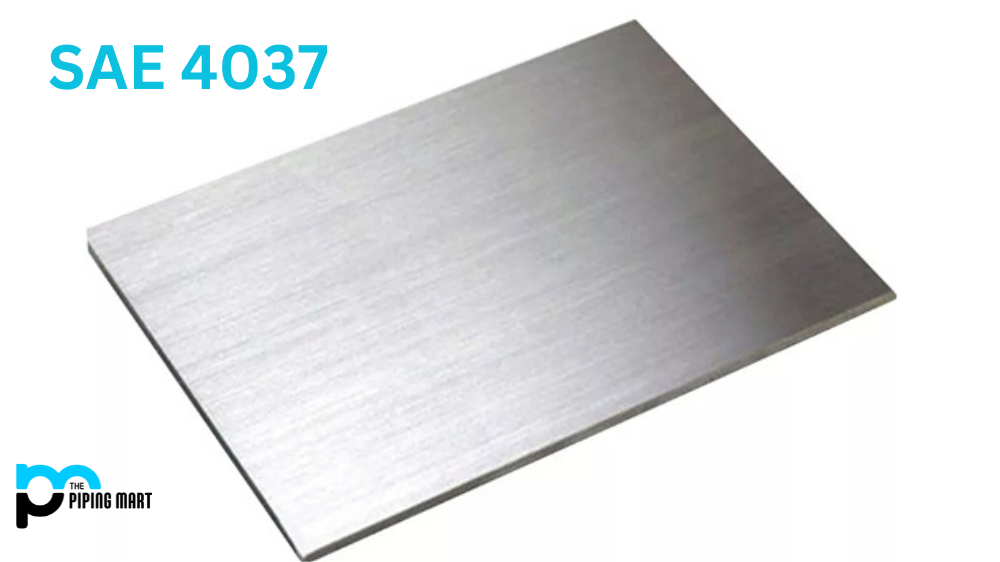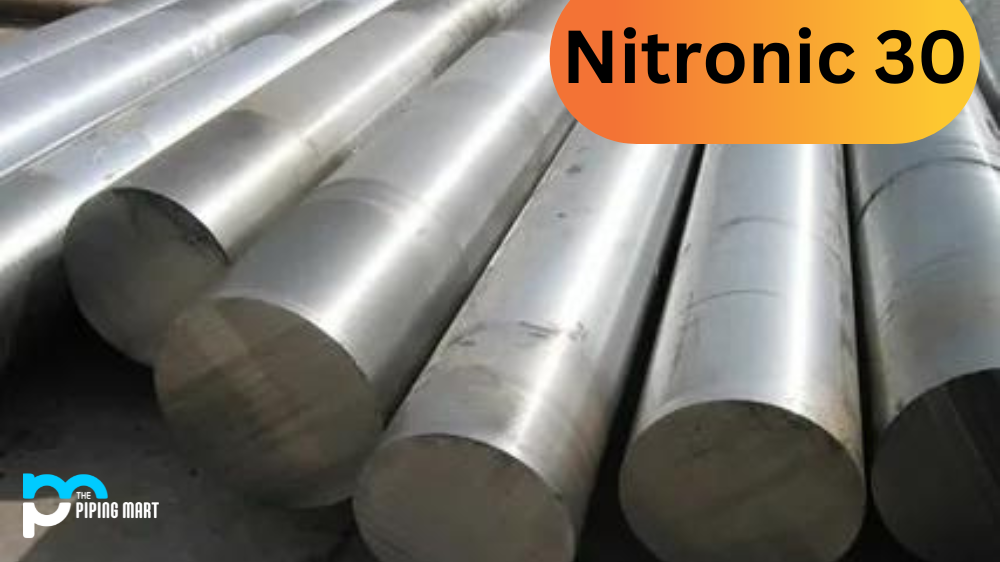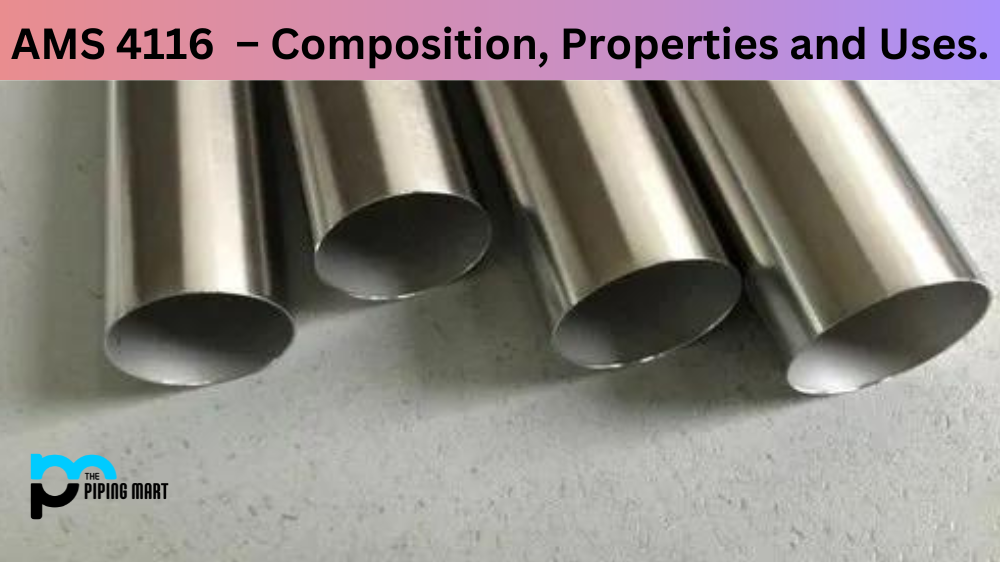SAE / AISI 4037 is a medium-carbon steel alloy. It has a tensile strength of 515 MPa and a Brinell hardness ranging between 241 and 302. Due to its higher carbon content, it has excellent hardening properties and strength compared to other steels. In this blog post, we’ll explore the properties of SAE / AISI 4037, its uses, and what makes it different from other types of steel.
SAE / AISI 4037 Steel Composition
| Element | Content (%) |
|---|---|
| Iron, Fe | 97.98-98.6 |
| Manganese, Mn | 0.70-0.90 |
| Carbon, C | 0.35-0.40 |
| Silicon, Si | 0.15-0.35 |
| Molybdenum, Mo | 0.20-0.30 |
| Sulfur, S | 0.040 |
| Phosphorous, P | 0.035 |
SAE / AISI 4037 Steel Physical Properties
| Properties | Metric | Imperial |
|---|---|---|
| Density | 7.85 g/cm3 | 0.284 lb/in³ |
SAE / AISI 4037 Steel Mechanical Properties
| Properties | Metric | Imperial |
|---|---|---|
| Elastic modulus | 190-210 GPa | 27557-30458 ksi |
| Bulk modulus (typical for steel) | 140 GPa | 20300 ksi |
| Shear modulus (typical for steel) | 80 GPa | 11600 ksi |
| Poisson’s ratio | 0.27-0.30 | 0.27-0.30 |
| Hardness, Brinell | 196 | 196 |
| Hardness, Knoop (converted from Brinell hardness) | 218 | 218 |
| Hardness, Rockwell B (converted from Brinell hardness) | 92 | 92 |
| Hardness, Rockwell C (converted from Brinell hardness, value below normal HRC range, for comparison purposes only) | 12 | 12 |
| Hardness, Vickers (converted from Brinell hardness) | 206 | 206 |
| Machinability (annealed and cold drawn, based on 100 machinability for AISI 1212 steel) | 70 | 70 |
SAE / AISI 4037 Steel Thermal Properties
| Properties | Metric | Imperial |
|---|---|---|
| Thermal conductivity | 48.1 W/mK | 334 BTU in/hr.ft².°F |
SAE / AISI 4037 Steel Equivalent
- AMS 6300
- ASTM A322
- ASTM A331
- ASTM A519
- ASTM A547
- SAE J404
- SAE J412
- SAE J770
SAE / AISI 4037 Steel Corrosion Resistance
SAE / AISI 4037 has excellent corrosion resistance when used in environments with low humidity levels. The presence of manganese helps protect the steel from corrosion but is still vulnerable to rust if exposed to oxygen for long periods. SAE / AISI 4037 should be plated with a protective coating such as paint or galvanizing to prevent corrosion.
SAE / AISI 4037 Steel Heat Resistance
SAE / AISI 4037 can withstand temperatures up to 540°C without losing shape or becoming brittle. It is also resistant to creep deformation when exposed to high temperatures over long periods. However, its lower chromium content may make it more susceptible to oxidation at elevated temperatures than higher chromium grades.
SAE / AISI 4037 Steel Heat Treatment
SAE / AISI 4037 responds well to heat treatment processes such as annealing, quenching, and tempering. These processes can improve its mechanical properties, such as toughness and ductility while improving its machinability rating (around 55).
SAE / AISI 4037 Steel Machining
Machining SAE / AISI 4037 should be done slowly using sharp tools lubricated with mineral oil-based cutting fluids. This will help reduce tool wear and tear while improving surface finish quality.
SAE / AISI 4037 Steel Welding
SAE / AISI 4037 can be welded using traditional fusion methods such as oxy-fuel or shielded metal arc welding (SMAW). Low-hydrogen electrodes should be used when welding this material as they reduce the risk of cracking or porosity during cooling after welding. Post-weld stress relief should also be performed by heating the joint area up to 540°C for one hour per 25 mm thickness before cooling slowly with air or oil baths.
SAE / AISI 4037 Uses
SAE / AISI 4037 alloy steel is a heat-treatable alloy that contains chromium, molybdenum, and silicon. It has good wear resistance, toughness, and strength, making it an ideal choice for many industrial applications. This alloy is frequently used in forging parts requiring both formability and wear resistance, like automotive components or tools used in construction. It can also make tools and dies for cutting materials such as earthenware or iron. Additionally, it is helpful in manufacturing rotary or plain bearing rings because of its hardness and fatigue strength. All in all, SAE / AISI 4037 offers many advantages for various uses with its high wear resistance, strength-to-weight ratio, and relatively low cost.
Conclusion:
In conclusion, SAE/AISI 4037 is an ideal choice for applications that require high strength, good machinability, and excellent corrosion resistance in low-humidity environments. Its heat resistance and post-weld stress relief makes it highly suitable for applications where temperature changes are frequent or extreme – such as automotive components that must perform in extreme temperatures or machines that must operate continuously under high heat loads. With proper care and attention given during machining and welding operations, this type of steel can provide reliable performance over long periods – making it an excellent choice for many industries, including automotive manufacturing, engineering components manufacturing, machine building, construction projects, and much more!

Meet Bhavesh, a seasoned blogger with a wealth of knowledge and experience. From metal products manufacturing to retail, Bhavesh has a diverse background in various industries and is dedicated to sharing his insights and expertise with readers.




